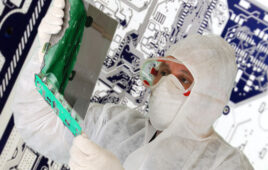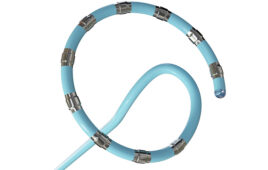Hank Mancini/Marketing Manager/Affinity Medical Technologies, a Molex Company
When designing medical devices, engineers face challenging conditions and complex choices not found in many other industries. The devices need to provide durability and reliability in harsh conditions with fluids, sterilization, and physical and electromagnetic interference. High mating cycles also play a role. These medical devices rely heavily on the underlying electronic interconnects to be effective. Connector design is an integral part of the design process and specifying the right connector is critical.
A quick look at options
The first consideration for engineers is deciding between an off-the-shelf connector, a hybrid version or a custom solution.
- Off-the-shelf connectors are commercially available in multiple configurations. While these typically require a smaller engineering and tooling investment, they often have long lead times and a higher per-unit cost.
- Hybrid versions include custom over-molded features on a stock connector body. These provide improved performance and an aesthetic value over off-the-shelf products and lower design and engineering costs than fully custom connectors, but also have long lead times.
- Custom solutions are designed and manufactured for a specific customer, device, or application. With custom connectors, it’s easier to integrate components or electronics and incorporate markings or logos. The initial investment in engineering and tooling fabrication is typically higher, but these solutions can be more cost-effective in the long run depending on volume.
Consider each application
In many instances a custom or hybrid solution is preferred to an off-the-shelf option, especially when there are unique considerations.
For instance, medical personnel in a procedure room with a dozen or more different cables and connectors in use simultaneously, run the risk of connecting the wrong cable and device. Off-the-shelf connectors can be outfitted with different colors over-molded to create a hybrid model that clearly identifies which connector goes to which device.
Devices used on patients must often withstand a defibrillation pulse of 5,000 to 8,000 volts, should the patient go into cardiac arrest. In this situation, insulation, spacing, materials, and air gap can be customized to meet the specific application needs.
Other examples of custom features include designing the connector to prevent incompatible mating. Or, due to ergonomics, the ideal medical interconnect should be large enough to be easily handled by the intended user and intuitively mated.
Understand the process
With hybrid or custom medical connectors, the design, tooling, and manufacturing process can typically take between four and eight months. Early in the design process, the team needs to establish detailed requirements that include electrical (voltage, defibrillation, bandwidth/data rates, and more), mechanical (cable diameter, ergonomic features, expected flex life, desired mate and un-mate force, and more) and environmental (sealing and ingress protection, cleaning, sterilization, and others).
After the specifications are established, and design work is agreed upon (which includes solid models), fabrication of the prototype can begin.
When selecting a hybrid or custom medical connector, teamwork between all parties is critical. The result will be a medical device, including the connector and cable assembly, which meets all mechanical and electrical requirements and performs well in the field.





